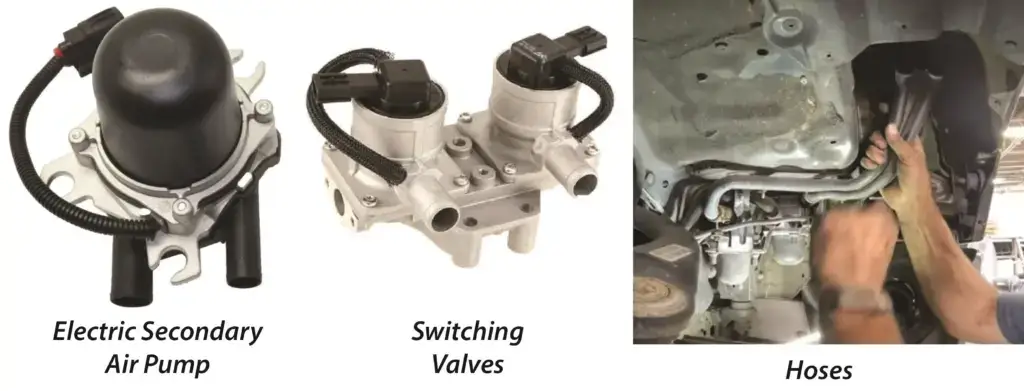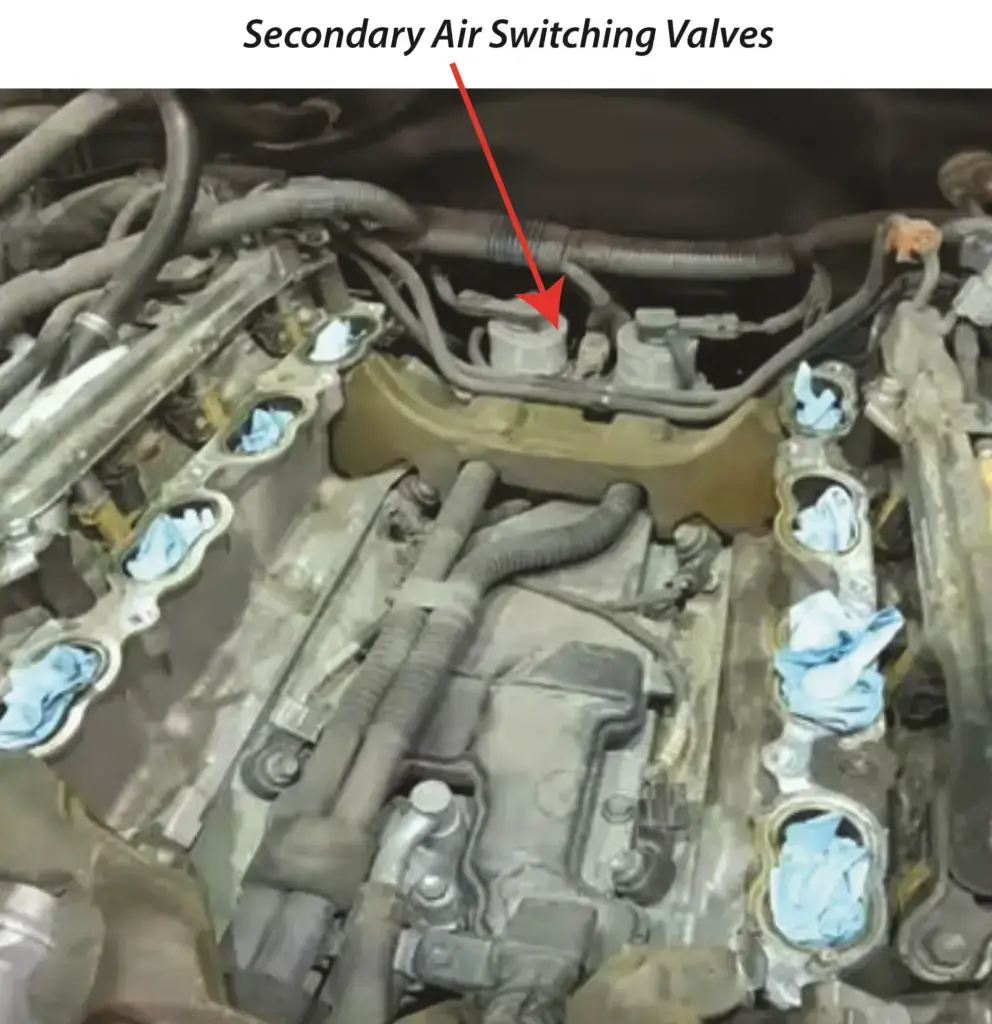A Toyota P2443 Code is pretty common and is a DIY fix.
Learn what causes a Toyota P2443 code on the Secondary Air System and How to Fix It
Many Toyota V-6 and V-8 engines develop problems with the secondary air system. To learn what a secondary system is and why it’s used, see this post, or read the summary below. A Toyota P2443 code is a common failure with the secondary air system, but these other codes are also common on Toyotas:
P2440 – AIR System Switching Valve Stuck Open Bank 1
P2441 – AIR System Switching Valve Stuck Closed Bank 1
P2442 – AIR System Switching Valve Stuck Open Bank 2
P2443 – AIR System Switching Valve Stuck Closed Bank 2.
They’re all caused by water infiltration into the secondary air system that causes corrosion and failure of the pump and valves.
Secondary Air Systems — What they do
On a cold start the engine computer commands a rich fuel mixture to fire up the cold engine. The cold metal tends to quench the combustion early so some of that extra fuel doesn’t get burned and winds up in the catalytic converter. The catalytic converter needs to reach 600° for it to work properly and it relies on the heat of the exhaust plus, fuel and air to reach that temperature. However, there’s very little oxygen left in the exhaust during a cold start. A Secondary Air system is designed to pump outside air into the exhaust to provide that extra oxygen. The Secondary Air system consists of an electric air pump, switching valves and hoses.
How the Toyota Secondary Air Failure occurs
Toyota installs the secondary air valves at the back of the intake manifold on V engines. But they installed the air pump and the air intake hoses inside the front fender.
The air pump sucks in air from inside the fender and pumps it up to the switching valves. The valves open during cold starts and close once the catalytic converter reaches operating temperature. Unfortunately, the system was poorly designed because it allows water to enter the air intake hoses inside the fender during rain events. Once in the hoses, the water enters the pump and switching valves, corroding both.
How to fix the problem
Toyota uses a single switching valve with two solenoids; one for Bank 1 and the other for Bank 2. It really doesn’t matter which valve is affected or whether the valve is stuck open or closed because the fix is to replace the entire switching valve. But the problem is rarely limited to just the switching valves. If they’re corroded, so is the pump. So the full fix is to replace the pump and hoses inside the fender, along with the switching valves at the back of the engine.
Toyota has redesigned the hoses with caps on the ends to prevent water ingress, so don’t reuse the old hoses!
Can you fix a Toyota P2443 code yourself?
Probably. The hardest part of the job requires removing the intake manifold. You’ll need a 3/8-inch drive torque wrench to reinstall the manifold (the right torque is critical when reinstalling). You’ll also need a new pump, switching valve, updated hoses, and valve gaskets.
I recommend buying a short subscription to alldatadiy.com or eautorepair.net for torque specs and diagrams. Start by removing the air cleaner and air intake duct. Then remove the upper intake manifold plenum. This is what it will look like once those parts are off.
Posted on by Rick Muscoplat

